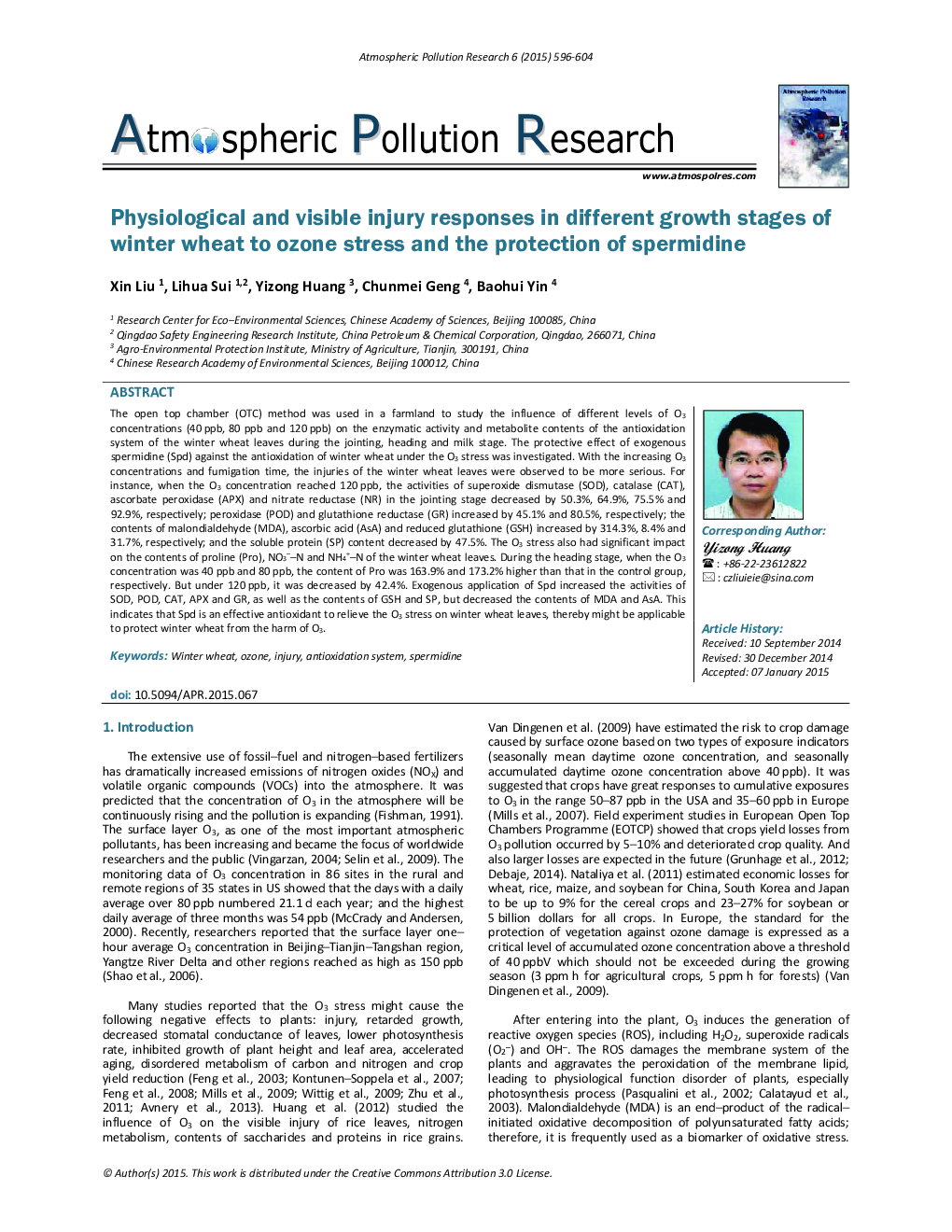| Article ID | Journal | Published Year | Pages | File Type |
|---|---|---|---|---|
| 4434818 | Atmospheric Pollution Research | 2015 | 9 Pages |
The open top chamber (OTC) method was used in a farmland to study the influence of different levels of O3 concentrations (40 ppb, 80 ppb and 120 ppb) on the enzymatic activity and metabolite contents of the antioxidation system of the winter wheat leaves during the jointing, heading and milk stage. The protective effect of exogenous spermidine (Spd) against the antioxidation of winter wheat under the O3 stress was investigated. With the increasing O3 concentrations and fumigation time, the injuries of the winter wheat leaves were observed to be more serious. For instance, when the O3 concentration reached 120 ppb, the activities of superoxide dismutase (SOD), catalase (CAT), ascorbate peroxidase (APX) and nitrate reductase (NR) in the jointing stage decreased by 50.3%, 64.9%, 75.5% and 92.9%, respectively; peroxidase (POD) and glutathione reductase (GR) increased by 45.1% and 80.5%, respectively; the contents of malondialdehyde (MDA), ascorbic acid (AsA) and reduced glutathione (GSH) increased by 314.3%, 8.4% and 31.7%, respectively; and the soluble protein (SP) content decreased by 47.5%. The O3 stress also had significant impact on the contents of proline (Pro), NO3––N and NH4+–N of the winter wheat leaves. During the heading stage, when the O3 concentration was 40 ppb and 80 ppb, the content of Pro was 163.9% and 173.2% higher than that in the control group, respectively. But under 120 ppb, it was decreased by 42.4%. Exogenous application of Spd increased the activities of SOD, POD, CAT, APX and GR, as well as the contents of GSH and SP, but decreased the contents of MDA and AsA. This indicates that Spd is an effective antioxidant to relieve the O3 stress on winter wheat leaves, thereby might be applicable to protect winter wheat from the harm of O3.
